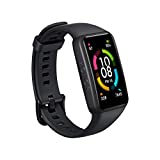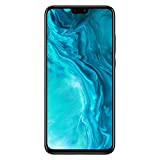It has been a long time since the team of Huawei my brand speech Honor as if describing an entity completely foreign to their brand, something built ad-hoc for the young people (but also "young people inside“), Often with products low cost. A modus operandi that I have always found difficult to understand. In short, why not differentiate the product range by keeping the Huawei logo?
It seems that the answer to my question needed more than a simple press release. It therefore happens that, to understand why the two brands are so different from each other, I fly to the Far East, where it all started: a Shenzhen asian silicon valley, where Huawei is headquartered.
Shenzhen, China's Silicon Valley
After tens and tens of hours of flight, I land in Hong Kong; there the group from all over Europe awaits me. Together, we cross the dreaded Chinese border to reach the megalopolis of Shenzhen.
If you want to know how the first two days in China went, I recommend you read this travelogue.The history of Shenzhen, he tells me Steven (this is his western name), a very young employee of Huawei, recruited in one of the thousands universities around China. “Shenzhen was officially born 39 years ago, in 1978, at the behest of Deng Xiaoping. At the time it was nothing more than a fishing village: today it has more than 11 million inhabitants, ”says Steven.
The sudden and exponential development, however, makes Shenzhen a city without a soul, easily comparable to an immense factory that has neither a beginning nor an end.
Shenzhen is a "special" place as it is part of the so-called Chinese Special Economic Zones, areas whose economic management is particularly flexible, thus allowing companies, which settle here, to develop their business in a facilitated way.
In this context of particular advantage arises in - in 1987 - the giant Huawei, a brand that today boasts a mega complex of 1600 square meters, north of the city. The Chinese headquarters is literally a city within a city, or at least that's what our local guides tell us.
Here there are dozens and dozens of buildings in which all the production processes of the various Huawei-branded devices are developed (and they are not just smartphones).
Huawei: the city within the city
During our first day of stay we were, for example, led to see with our own eyes two laboratories inside the Huawei Cloud Park. The first place is a laboratory in which smartphones under development are literally "tortured". Before being sent to production, smartphones suffer all kinds of harassment: from accompanied drop test (a mechanical arm throws the smartphone on a hard surface), to check the resistance of each side of the device, al washing machine test (in which a woman's bag filled with all kinds of objects is simulated) to check resistance to scratches and dust. Or again, the smartphone is inserted into ovens / freezers capable of going from -25 ° to + 50 ° Celcius in a few minutes. If the phone "survives" and these and dozens of other tests, it means that it is ready to face the world market.
Here, unfortunately, it was categorically forbidden to take photographs so as not to affect the secrets of the tests developed inside the Cloud Park.
Another laboratory in which we have been sent to snoop is the Consumer Lab, a place apparently useless. Here they are dismembered and analyzed in detail - using the technique of reverse engineering - many products that do not match at all with the current business plans undertaken by Huawei. Consumer Lab engineers analyze the home consoles for gamgin (PS4 and Xbox One in the first place), all virtual reality viewers (Playstation VR, HTC Vive, Oculus, etc) but also drones, robots, wearables, systems for the internet of things (IoT) and augmented reality viewers such as Holo Lens.
On one of the walls of the Consume Lab there is this gigantic scheme that well summarizes the reverse "explorations" undertaken by Huawei in relation to direct and non-direct competitors.
But to what purpose? What is all this immense analytical work for? It's very simple. If one day the management of Huawei were to decide to undertake - for example - the path of virtual reality, they would know perfectly well where to start and what to focus on. This is a way like any other to save time in a very aggressive market.
I know, I have gone too far perhaps, but all this narration was necessary to make you understand on which bases the foundations of the Honor brand rest: the solid foundation that Huawei has built over 30 years of hard work.
Honor therefore was born as the rib of a colossus like Huawei and apparently it seems that it wants to clearly divide the paths of the two despite everything that unites them.
But this story of "young brand for young people (inside and out)”Does not fully convince. Why shouldn't Huawei be for young people? It just looks like a cover of some kind. However, I did not receive "enlightenment" until I attended the launch conference of the new one Honor Magic, the smartphone that promises wonders and that - for the moment - will be marketed exclusively in China.
Because Honor is not Huawei
When on stage, Mr. George Zhang, CEO of Honor, begins to rattle off the futuristic features (such as integrated artificial intelligence) of Honor Magic, some things immediately become clearer to me: Honor is Huawei's true creative laboratory, a brand with which they can experiment (both from the point of view of design and software as in the case of Honor Magic) without fear of damaging the good name of Huawei built with difficulty over the years.
ALSO READ: Everything you need to know about Honor Magic
Honor is like a young and carefree boy who is allowed to make mistakes, without too many consequences. The gentleman in a suit and tie who instead responds to the name of Huawei has the obligation to behave like a good family man. This is why Honor is so indissolubly linked to the concept of "young people".
But the differences don't end there: the two brands also clearly stand out when it comes to marketing e terms of sale. It was Mr. George Zhao himself who told it during a long Q&A session with the press.
Mr. Zhao explains that the promotion of this eBrand - as they define them - takes place from below. Let me explain: how many advertising campaigns have you found online dedicated to Honor? I tell you, very few. It is the consumer himself who, once he has purchased an Honor product, will go to the forums or to any other online space to tell how good he was - for example - with his beautiful and sparkling Honor 8.
Now I ask you another question: how many Huawei advertisements have you seen in recent times? Carpeted cities and Hollywood stars (Scarlett Johansonn e Henry Cavill) who lend their faces to promote the newcomer Huawei P9.
In short, money poured out for Huawei, the brand in a "suit and tie" and almost "organic" promotion for Honor, the "young reckless" who only sells online.
Honor then abandons theaggressiveness that distinguishes the Chinese market, where the important thing is to sell at any cost, to prefer a softer approach that positions the product at a competitive price by preferring an exclusively online sale.
OfferBestseller No. 1 HONOR Band 6 Smartwatch Fitness Watch Men Women Activity ...
HONOR Band 6 Smartwatch Fitness Watch Men Women Activity ...
- ⌚ 【1,47 "AMOLED display and over 100 Fashion Fashion Dials】: HONOR Band 6 fitness tracker with touch screen ...
- ? 【14 Days Battery and Quick Charge】 : Honor Band 6 Activity Tracker can last 14 days. Honor ...
- ♥ 【All Day Heart Rate Monitoring and Blood Oxygen Monitoring】 : Honor ...
 Honor 9X Lite Smartphone, 4 Gb Ram, Memoria 128 Gb, Display...
Honor 9X Lite Smartphone, 4 Gb Ram, Memoria 128 Gb, Display...
- Screen: 6,5 ", 1080 x 2340 pixels
- Processor: Kirin 710F 2.2Ghz
- Camera: dual, 48MP + 2MP
Honor Café: why create it?
This type of approach is also confirmed by the creation of theHonor Cafe of Shenzhen, a space included within a shopping center and open 24 hours, located in the youngest area of the Chinese metropolis. Here all those who wish can relax by reading a good book (offered by the house), work using the free Wi-Fi connection, or get their hands on one of the Honor products on display.
In short, Honor proves to be a "smaller" brand, agile and flexible but above all capable of dare without fear of making mistakes. The low cost prices set for Honor products do not make these smartphones "cheap" devices (call them cinesate if it makes you happy), indeed they fully demonstrate how it is possible - only if your name is Huawei - to propose to market an inexpensive smartphone with very high performance and excellent design (see Honor 8 or Honor 6X).
For now we don't know what Honor's future plans are for conquering the smartphone market. The only thing we know - because we have experienced it first hand - is that the brand is doing a great job especially in terms of product development.
Too bad it took a trip to the other side of the world to understand all this.
Early china Honor Magic Huawei reviews shenzhen In China, I found out why Honor is not Huawei



















![[Review] Samsung Powerbot VR7000: the robot vacuum cleaner from Star Wars](/images/posts/6bc44de38605b5c0fa12661febb1f8af-0.jpg)





